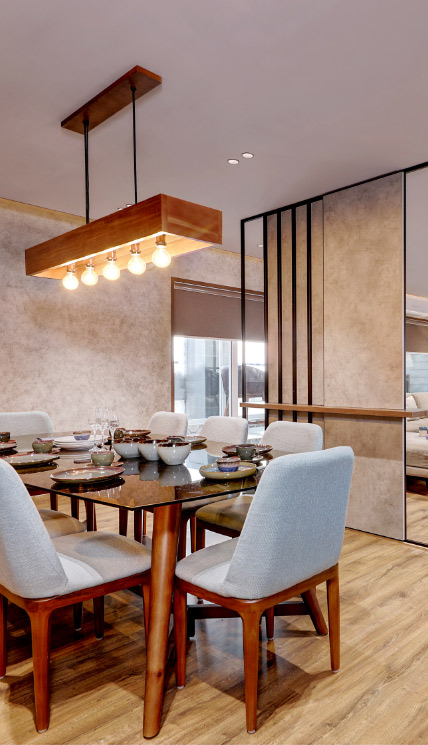Design a stunning look with miami interior design that reflects elegance and functionality.
Design a stunning look with miami interior design that reflects elegance and functionality.
Blog Article
Change Your Home With Necessary Principles of Interior Decoration and Looks
The art of changing your home through the vital concepts of indoor design and aesthetics needs a thoughtful technique that balances shade, equilibrium, and spatial recognition. By recognizing the impact of shade concept and the value of structure and patterns, one can develop rooms that are not only visually attractive but likewise deeply personal. Accomplishing this stability entails more than simple design; it includes a tactical plan and a keen understanding of just how each component connects within a space. As we explore these foundational principles, consider how they may redefine your understanding of home and personal expression.
Recognizing Color Concept
Comprehending the concepts of color concept allows developers to create areas that resonate mentally with owners while satisfying functional needs. Each group plays a crucial role in developing harmony within an area.
The psychological effect of colors is extensive; cozy colors such as reds and oranges evoke energy and warmth, while awesome tones like blues and environment-friendlies advertise peace and peace. Additionally, the usage of corresponding shades boosts visual rate of interest, developing striking contrasts that can boost a room's appeal.
Neutral colors, on the other hand, serve as a functional backdrop, enabling various other design elements to radiate. It is important to take into consideration elements such as lighting and the room's objective when selecting a shade palette, as these can alter the assumption of colors throughout the day.
Ultimately, a well-considered color design can change a room, cultivating a feeling of comfort and style that lines up with the occupants' preferences. Mastery of color concept is, for that reason, an important skill for any type of interior designer aiming to produce unified and inviting environments.
Attaining Equilibrium in Layout
How can developers attain a sense of balance in their rooms? Attaining balance in design is essential to developing unified interiors.
Unbalanced balance, on the other hand, depends on varying elements that still attain a natural look. This strategy enables for more dynamic and informal arrangements, giving passion while maintaining balance. By carefully choosing varying dimensions, shades, and structures, designers can create a visually compelling space that really feels well balanced yet energised.
Radial balance emphasizes a main centerpiece with aspects radiating outside. This design is generally seen in round designs, where furniture and decoration produce a natural border that attracts the eye internal.
Eventually, achieving equilibrium calls for thoughtful consideration of range, percentage, and the relationships in between elements. interior design firms. By skillfully using these balance principles, designers can change rooms into atmospheres that really feel both visually pleasing and functionally harmonious, enhancing the total experience for owners
Value of Spatial Recognition

A keen feeling of spatial recognition enables designers to identify focal factors within a room, leading the customer's interest to vital attributes while maintaining a general feeling of unity. It likewise assists in the calculated positioning of lights, which can drastically affect the understanding of area and mood. Comprehending spatial connections enables the developer to provide to the details needs of citizens, making certain that each area serves its desired objective without endangering aesthetics.
Eventually, spatial awareness is crucial for taking full advantage of the possibility of any kind of interior area. By carefully considering the interaction between measurements, design, and feature, developers can develop environments that not only meet functional requirements however also evoke a feeling of convenience and appeal, improving the general living experience.
Integrating Appearance and Patterns
Accepting a diverse variety of appearances and patterns can considerably improve the aesthetic and responsive allure of an interior space. The tactical use different products-- such as wood, steel, material, and rock-- develops depth and rate of interest, making a space really feel more inviting and dynamic. Incorporating smooth surfaces with harsh textures can establish an equilibrium that draws the eye and involves the detects.
When including patterns, think about both range and repetition. Large patterns can act as prime focus, while smaller, refined styles can complement various other elements without overwhelming the room. Layering patterns, such as pairing floral paddings with striped tosses, includes complexity and a feeling of consistency if performed thoughtfully.
It is also vital to preserve a cohesive shade scheme, guaranteeing that textures and patterns interact rather than complete for interest. By picking a few crucial structures and patterns, you can develop a linked aesthetic that shows your personal design while site here improving the general ambiance of the space. Inevitably, the cautious unification of these aspects can change a mundane area right into a sophisticated atmosphere abundant with character and heat.
Individualizing Your Space
Creating a space that mirrors your character is essential to achieving a truly inviting atmosphere. Personalization in indoor style enables you to infuse your one-of-a-kind design and interests right into your home, changing it from a plain shelter right into a sanctuary that speaks to who you are. Begin by selecting a shade scheme that reverberates with your feelings-- vibrant hues can stimulate, while soft tones use peace.
Incorporate art work and design that mirror your enthusiasms, whether it be travel, nature, or abstract ideas. Showing individual collections, such as publications, photographs, or mementos, can stimulate cherished memories and develop focal factors within a room. Additionally, think about customizing practical pieces, like upholstered furnishings, to align with your visual preferences.
:max_bytes(150000):strip_icc()/GettyImages-1161177015-f1de4ba58a6c4f50969d9119d80405a6.jpg)
Final Thought
In verdict, the transformation luxury interior design of a home through the essential concepts of interior decoration and looks necessitates a detailed understanding of shade concept, balance, spatial awareness, appearance, and personalization. Each element contributes significantly to producing a harmonious and practical living environment - luxury interior design. By thoughtfully integrating these principles, individuals can boost the aesthetic appeal and emotional vibration of their rooms, eventually promoting a home that mirrors special identities while providing comfort and functionality
Report this page